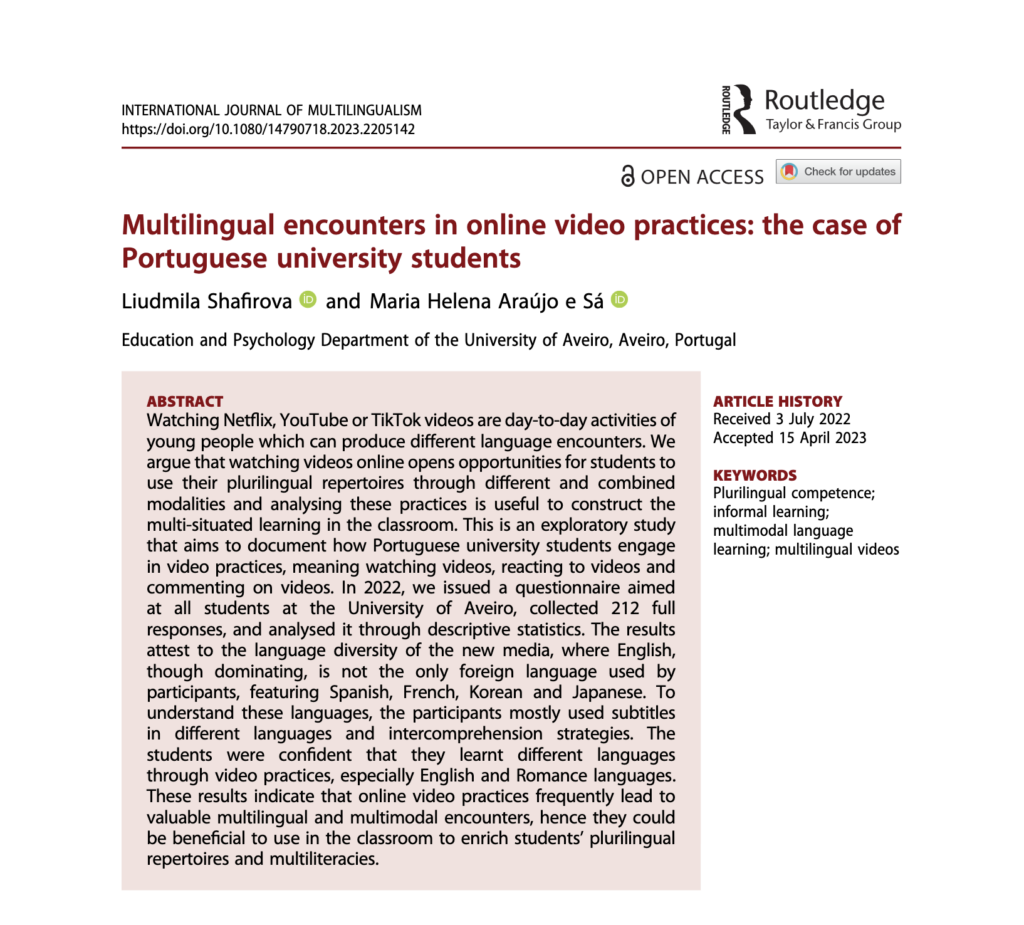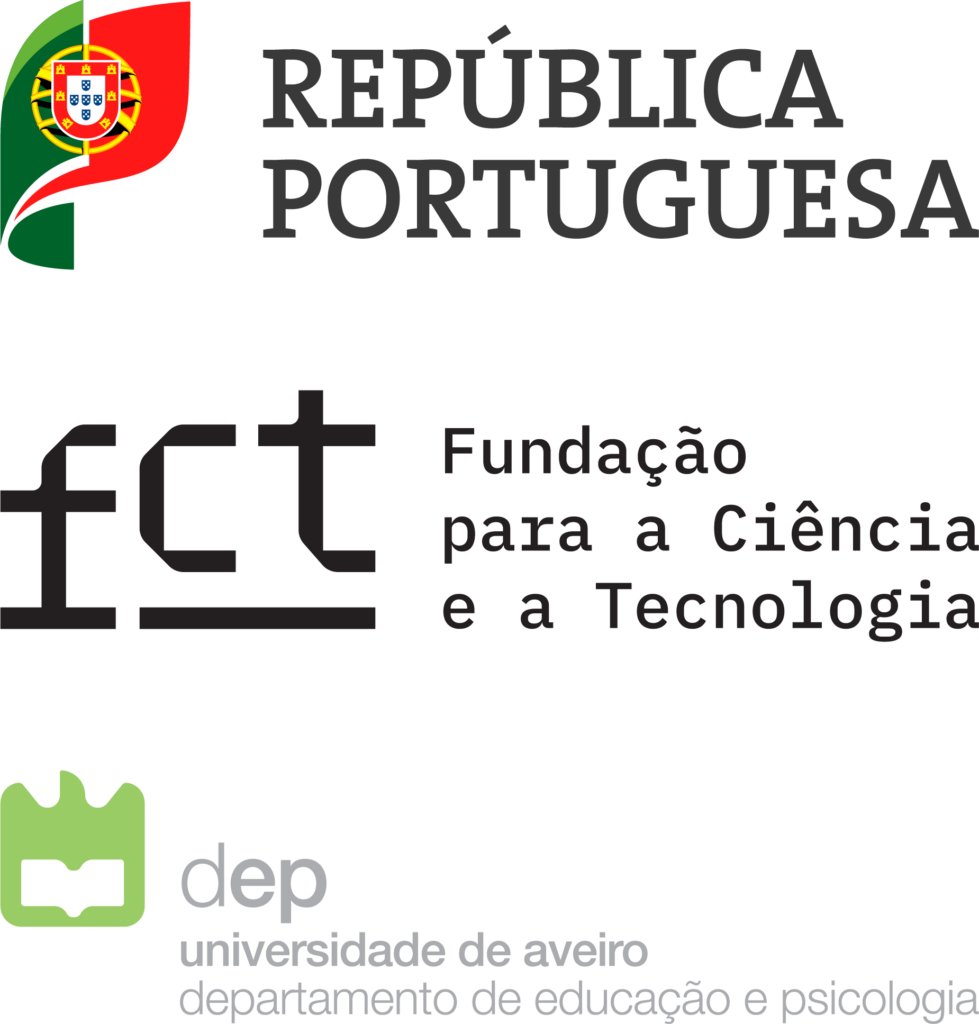Liudmila Shafirova (CIDTFF) & Maria Helena Araújo e Sá (CIDTFF) | International Journal of Multilingualism, pp. 1-18
Abstract:
Watching Netflix, YouTube or TikTok videos are day-to-day activities of young people which can produce different language encounters. We argue that watching videos online opens opportunities for students to use their plurilingual repertoires through different and combined modalities and analysing these practices is useful to construct the multi-situated learning in the classroom. This is an exploratory study that aims to document how Portuguese university students engage in video practices, meaning watching videos, reacting to videos and commenting on videos. In 2022, we issued a questionnaire aimed at all students at the University of Aveiro, collected 212 full responses, and analysed it through descriptive statistics. The results attest to the language diversity of the new media, where English, though dominating, is not the only foreign language used by participants, featuring Spanish, French, Korean and Japanese. To understand these languages, the participants mostly used subtitles in different languages and intercomprehension strategies. The students were confident that they learnt different languages through video practices, especially English and Romance languages. These results indicate that online video practices frequently lead to valuable multilingual and multimodal encounters, hence they could be beneficial to use in the classroom to enrich students’ plurilingual repertoires and multiliteracies.
– – – – –
Referência:
Shafirova, L, & Araújo e Sá, M. H. (2023). Multilingual encounters in online video practices: the case of Portuguese university students. International Journal of Multilingualism, Ahead-of-Print, 1-18. https://doi.org/10.1080/14790718.2023.2205142





